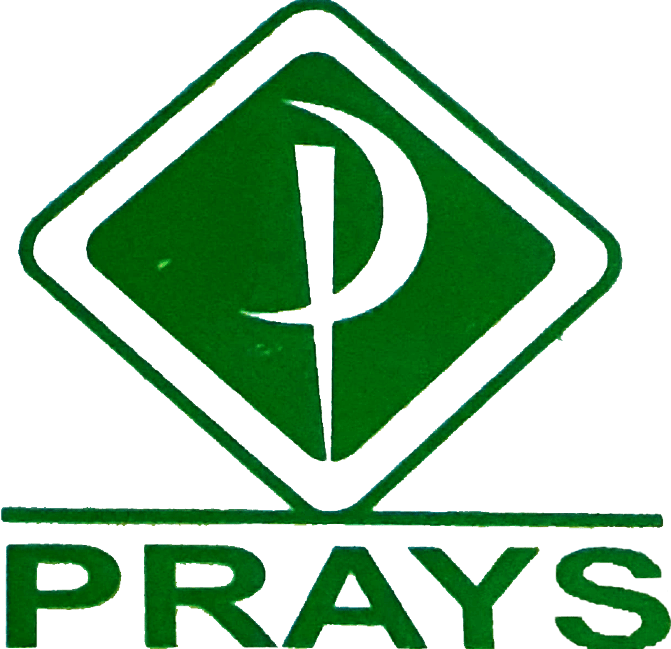Use the pneumonic SPAM to remember that Same (with motion) requires Plus power and Against motion requires Minus power. Therefore, we use the minus (-) sign to denote concave curves, the plus (+) sign to denote convex curves, and the term "plano" to describe a flat or zero curve. This is Mark Wilkinson from the University of Iowa Department of Ophthalmology & Visual Sciences. Learn how to transpose and eyeglass prescription here at Optical Academy!
As a beginner, stay away from uncooperative patients (babies and mentally handicapped) and those with significant corneal or lens pathology. body #nf-form-19-cont :-ms-input-placeholder { /* IE 10+ */ Figure 1. YOU MAY ALSO LIKEDiplopia Charting: Common Method of Double Vision Test, Facebook | Twitter | Pinterest | Instagram | Tumblr | Reddit | LinkedIn, About Us|Contact|Privacy Policy|Sitemap|Disclaimer|Terms & Conditions, Lens Transpose (Rx) & Spherical Equivalent Chart, Formula, Spherical Equivalent and Lens Transposition (Transpose Rx), Definition of Lens Transposition (or Rx Transpose), Importance of lens transposition (transpose rx), Cross cylinder lens transposition calculator or rx transpose calculator, Uses and Importance of spherical equivalent, Examples of Spherical Equivalent Refraction in Myopia and Hyperopia, Spherical equivalent calculator or converter, Online eyeglass prescription positive cylinder converter, Hess Charting: Interpretation of Hess Screen Test, Diplopia Charting: Common Method of Double Vision Test, Double Vision (Diplopia): Causes, Tests, and Treatment, Top Oncology Journals: Cancer Journals List, Spiritual Meaning of Chest Pain, Heaviness, & Tightness, Nausea and Vomiting Spiritual Meanings, & Myths, 10 Mongolian Birthmark Spot Spiritual Meanings, Spiritual Meaning of Sneezing in a Row, Superstition, Chin Twitching Superstition and Spiritual Meanings, To reduce the unwanted central lens thickness, To determine if the refractive outcome after cataract surgery was on target, To calculate a trial lens for visual field (automated and manual) testing and electrophysiological (VEP and ERG) testing, To reduce astigmatism in an eyeglass and contact lens prescription for those who have trouble adapting, To compare overall changes in prescriptions. Slide 18 The optometric transposition calculator is a handy tool created to quickly transpose any prescription with ease. Based on the SE Formula (SE= Sphere+Cylinder/2), we have presented the Spherical Equivalent of every Sphere and Cylinder combination between Sphere values of 0.00 to -7.75D and Cylinder values of 0.00 to -3.25D. Use worn lens power to enter original SPH, Cyl and Axis. All round great app, an exceptional app that any student studying maths needs, best app if you need help with math problems, but i don't like in this app is I have to pay for to be able to see the steps in solving my math problems. Then indicate the lens rotation, direction, and vertex. It is very easy to transpose glasses or spectacle prescriptions. There are two types of lens transposition. Transpose a lens ability of -1.00/+2.00 ten 100 (in the plus-cylinder course) to minus-cylinder grade. Worn lens is being used, if the final prescription is high, no use of vertex compensation is required. Enter the Rx* and click the appropriate button to convert the Rx to plus or minus cylinder form. Simple myopic astigmatism occurs with there is myopia in one meridian and emmetropia in the other meridian. Here is an example of simple myopic astigmatism. -0.50 +0.50 x 180. It is easier to see that there is only power in one meridian when this RX is converted to minus cylinder. In minus cylinder, the RX is Plano-0.50 x 090. I always find it interesting that the general public will call a plus lens a magnifying lens, but they never call a minus lens a minifying lens. Here are some key tips for each step: 1. Enter the lens parameters below. Depending on the equipment used by your provider, a lens prescription can come in either a plus (+) cylinder or minus (-) cylinder notation. Slide 10 Now lets review some additional classifications of refractive errors. First, there is refractive myopia. Refractive myopia occurs when the power of the eye exceeds 60D and the length of the eye is 22.6mm. This is due to steeper corneal curvatures or higher lenticular powers. Start by entering the spectacle and lens prescriptions and over-refraction. The spherical equivalent is calculated by adding the sum of the sphere power with half of the cylinder power. For example, with a spectacle correction of -3.00 +1.00 x 180, the spherical equivalent = -3.00D + (+1.00D) = -3.00D + 0.50D = -2.50D spherical equivalent., Slide 23 Refractive Cylinder Convention. 10/10 I can't really find a problem with This app it seems to work perfect, 10/10 recommend. Beware that the cylindrical power can be indicated in plus or minus cylinder form; lens transposition can convert one to the other. Sit at arms length from the phoropter. 3. Beware that the cylindrical power can be indicated in plus or minus cylinder form; lens transposition can convert one to the other. When rotated counterclockwise, you take away plus. Ophthalmologists typically learn retinoscopy and refraction in plus cylinder. What if there is astigmatism? Give us a shout. Alter the sign of the cylinder axis: + 2.00 becomes -two.00. Key step: When you add +0.50 D of cylinder power (two clicks clockwise, or right), you must take away 0.25 D of sphere (one click UP). Change the cylinder axis by 90 degrees: 100 90 = 10 degrees. You have achieved neutrality. Assuming the refractive error is spherical only, determine if you need to add plus or minus power. The diopter is the unit of measure used to describe the refractive error of the eye as well as the power of ophthalmic lenses. A diopter is defined as a unit of lens power equal to 1/focal length of the lens in meters, or 100/focal length of the lens in centimeters, or 40/focal length of the lens in inches. Here are the most important: When you perform a manifest refraction on a patient, occlude the contralateral eye (OC on the auxiliary lens knob) and keep the tested eye open (O on the auxiliary lens knob). Adjust the values to calculate the Magnification Difference. To provide the best experiences, we use technologies like cookies to store and/or access device information. Transpose Rx. Step 3: Change the axis by 90 degrees The spherical equivalent is defined as a spherical power whose focal point coincides with the circle of least confusion of a spherocylindrical lens. When rotated upwards, you add minus (or take away plus). Please enter all three values. It helps to bring the lens into proper curvature and thickness. Step 2. The lens becomes thinner and lighter when manufactured in a minus cylinder. border-style: solid; About the author: Olivia L. Lee, MD, is a specialist in uveitis and cornea/external disease at the Doheny Eye Institute andAssistant Professor of Ophthalmology at UCLA. Click here to see how to transpose an Rx manually. 525 Business Park Lane "articleSection" : "Looking to transpose your eyeglass prescription? Orientation of streak in astigmatic eye. Learn how to read your prescription in our blog post: How To Read Your Eye Prescription We know that it takes some effort to try something new. 1 Tilt adjustment, 2 Pupillary distance adjustment, 3 Strong sphere power, 4 Jackson cross, 5 Weak sphere power, 6 Viewing tube, 7 Cylinder axis, 8 Level, 9 Auxiliary lens dial, 10 Eye piece, 11 Risley prism, 12 Cylinder power. Transposition Calculator Converts plus to minus cylinder order now. Congratulations! Ophthalmologists write astigmatism prescriptions with positive (+) cylinders. Still have questions? Cylinder axis: First, increase the Snellen acuity one line. Ophthalmic scale = 1 to 180 degrees. Looking to transpose your eyeglass prescription? Before actually refracting, its important to prepare your patient for the process of refraction. one can transpose this rather simply with a few steps in mind.Optical Academy Eye Wear . For a new calculation click on the New button. Step 2. Usually, the spherical equivalent is not accurate enough to provide the sharpest vision. Refraction is the measurement of the eye's focusing characteristics and the determinant of a prescription. Add the sphere and cylinder values to obtain the new sphere power: -1.00 + 2.00 = +1.00 Step 2. Click here to see how to transpose an Rx manually. Slide 4 = +2.50 1.50 }, body #nf-form-19-cont ::-moz-placeholder { /* Firefox 19+ */ What is important to know is that the actual prescriptions are the same. } Slide 2 4. "headline": "Transpose Rx: How to convert an eyeglass prescription", Most eyeglass labs, including ours, cut lenses in the negative (-), and require that any positive (+) cylinder prescriptions be converted into the negative (-) equivalent. When rotated downwards, you add plus sphere. Compound myopic astigmatism occurs when there is myopia in all meridians, of differing amounts. An example of compound myopic astigmatism is -2.50 +0.50 x 180. In this case, there is myopia of -2.50D in the 180-degree meridian and -2.00D in the 90-degree meridian. Learn how to read your prescription in our blog post: How To Read Your Eye Prescription. Simply enter your numbers into the corresponding fields on the chart and it will output your new prescription information. We are completely mobile and come to you! You can deconstruct any spectacle correction by using an optical cross. To do this, make a cross and put the sphere power on the meridian of the cylinder axis. The cylinder power goes 90 away from the sphere power.. For surfacing, the lab uses the minus form, meaning if a prescription is written in a plus cylinder form it must be transposed before processing. Both types of lens transposition are described below. The second and third numbers refer to the astigmatism, if there is any. Combining the above three steps provides the lens power in the plus-cylinder form: -1.00/+2.00 x 090. } body #nf-form-19-cont .nf-error-msg{ Eyeglasses Ebook You will do this. You need to follow some basic rules to transpose minus cylinder to plus cylinder or plus cylinder to minus cylinder form. The only formula for calculating spherical equivalent from the toric lens prescription is to algebraically add of the cylindrical power to the spherical power and deleting the cylinder power and the axis from the equation. Rotate the beam until it is parallel with the reflex motion. Plus cylinder notation is the simpler choice. Slide 8 For refractive surgery, negative cylinder is actually more helpful and you will find most refractive 'OMD's' use negative cylinder. Simply input the correct lens formula and . Using the example of -1.00 +0.50 x 180. First add the sphere and cylinder powers together to get the new sphere power. In this case, you have -1.00 + (+0.50). This results in a new sphere power of -0.50D. Next change the +0.50 cylinder power sign to minus. Finally, change the cylinder axis by 90 degrees. In this case, 180 degrees 090 degrees = 090 degrees, which is the new axis. Use this calculator to convert any Rx between plus cylinder form and minus cylinder form. Using the spherical power dial on the phoropter (Figure 3), add the appropriate power until you see a bright red reflex without any motion that fills the pupil. It means half of the surface is no longer steeper (or flatter) than the other. You can do this. "sameAs":"https://www.facebook.com/opticalacademy/" Ophthalmologists usually learn retinoscopy and refraction in the plus cylinder while optometrists typically use the minus cylinder. How do you convert a plus cylinder to a minus cylinder and vice versa using lens transposition (transpose rx)? Here you see an image of a schematic eye. For purposes of ophthalmic optics, the emmetropic eye is defined as being 22.6 mm in length and have a refractive power of 60 diopters. text-align:center;} There is no specific online spherical equivalent calculator or spherical equivalent converter. Congratulations, you are finished with retinoscopy, https://www.youtube.com/watch?v=EjazGO1-XcU, https://www.youtube.com/watch?v=kAreDffuVCQ, https://www.youtube.com/watch?v=ezOoPKZwNDk, https://www.youtube.com/watch?v=ZjlyDi7iFqc, https://www.youtube.com/watch?v=bUEFgxx-eY8. Refraction is the measurement of the eyes focusing characteristics and the determinant of a prescription. Spherical power: Always add +0.50 D (diopters) first to decrease the risk of over-minusing the patient (when patients accommodate in the refractor, they will need more myopic lenses, which can lead to eye strain). You are at the right place. This can be done using a simple mathematical formula, which takes into account the minus and plus values of each number in your prescription. The animation will help you understand how images are focused on the retina through refraction. It has several calculators that are extremely useful: IOL CALC: Calculates the So, phoropters with plus cylinders are so popular. = (-1.50) (diopter sphere). All the eyeglass prescriptions should be mentioned in minus cylinder form or it should be transposed into minus form if it is in plus cylinder format. Slide 21 A patient has an Eyeglass prescription of -4.00/-1.00 90 degree, The Spherical Equivalent (SE)= -4.00 + (-1.00/2), A patient has a Toric Soft Contact Lens prescription of -2.00/-1.25 135 degree, = -4.625D (The Eye Doctor will choose either -4.50D or -4.75D), A patient has an Eyeglass prescription of +1.00/-2.00 180 degree, A patient has an Eyeglass prescription of +3.00/-1.00 145 degree, A patient has an Eyeglass prescription of -2.00/+1.00 90 degree. Refraction is not an easy skill to learn. Transpose a prescription written in plus cylinder form to minus cylinder form as follows: 1. The numbers a, b, and c are the coefficients of the equation . From there, you can easily order your glasses or contacts online using this information. The technical storage or access that is used exclusively for anonymous statistical purposes. We automatically perform this conversion if the prescription you enter is written with a positive (+) cylinder, but if you would like to get the conversion of your positive cylinder prescription, you can do so by using the Positive Cylinder Conversion tool below. This process involves taking the Cylinder value from your prescription and converting it into diopters using a similar formula.
A person is said to be emmetropic or have emmetropia, when parallel light rays focus on the retina with accommodation at rest. 180 (the base +2 plus the cylindrical +3). Sphere +20.00 to -30.00; Cylinder +20.00 to -20.00; 10 out of 10 highly recommend downloading. Here are some general tips to get the best refraction for your patient: Refraction requires practice, so practice often on cooperative patients at first. If the single lines and triple lines come into focus at the same time, the lens is spherical. Powered by. Start by entering the spectacle and lens prescriptions and over-refraction. Compound hyperopic astigmatism occurs when there is hyperopia in all meridians, of differing amounts. An example of compound hyperopic astigmatism is +2.50 +0.50 x 180. In this case, there is hyperopia of +2.50D in the 180-degree meridian and +3.00D in the 90-degree meridian. Refraction is not an easy skill to learn. Transpose refraction calculator. In short, the spherical equivalent is the average of the spherocylindrical prescription. Myopia (a.k.a. how to find cubic equation from table of values, lesson 1 extra practice solve equations with rational coefficients answers. In other words, the Spherical Equivalent Formula is: The axis is removed because the spherocylindrical surface is converted into a sphere by a spherical equivalent. With simple myopia, the same amount of myopia is found in all meridians. For example -2.50 D.S. Rule 2: Change the sign of the cylinder (minus to plus or plus to . Evan Silverstein, MD ChairGrayson W. Armstrong, MDCherie A. Fathy, MDBradley S. Henriksen, MDJessica Randolph, MDNandini Venkateswaran, MDDagny C. Zhu, MD, Instruction Courses and Skills Transfer Labs, Program Participant and Faculty Guidelines, LEO Continuing Education Recognition Award, What Practices Are Saying About the Registry, Provider Enrollment, Chain and Ownership System (PECOS), Subspecialty/Specialized Interest Society Directory, Subspecialty/Specialized Interest Society Meetings, Minority Ophthalmology Mentoring Campaign, Global Programs and Resources for National Societies, aao.org/young-ophthalmologists/yo-info/article/retinoscopy-101, Join the Academy at the 35th PAAO Congress, Focus on the VA Federal Supremacy Project, Ophthalmology Residency Training in Danger: Why the Department of Veterans Affairs Matters, YO Need to Know: 5 Scenarios for Early Glaucoma Referral, It's Complicated: The 2023 Cataract Webinar, 2023 Codequest Virtual - Multistate (live virtual), 2023 Codequest Virtual - Multistate (Recorded March 28), 2023 Coding Coach: Complete Ophthalmic Coding Reference, 2023 CPT: Complete Pocket Ophthalmic Reference, 2023 Retina Coding: Complete Reference Guide, 2023 Coding Assistant: Cataract and Anterior Segment, 2023 Coding Assistant: Pediatrics/Strabismus, 2023 Ophthalmology Coding Update (Recorded), Ophthalmic Medical Assisting: An Independent Study Course, Essentials of Ophthalmic Nursing kit RVSD (V1-V4), 2023 ICD-10-CM for Ophthalmology: The Complete Reference, 2022-2023 Basic and Clinical Science Course, Complete Print Set, 2022-2023 Basic and Clinical Science Course, Complete eBook Set, 2022-2023 Basic and Clinical Science Course, Complete Print and eBook Set, 2022-2023 Basic and Clinical Science Course, Residency Print Set, 2022-2023 Basic and Clinical Science Course, Residency eBook Set, International Society of Refractive Surgery, For more information, read Retinoscopy 101 at, Also check out an excellent video tutorial that describes loose-lens retinoscopy from start to finish at. For example, if the working distance between your retinoscope and the phoropter is 50cm, then subtract 1/0.5m or 2.00 diopters from the final spherical correction to account for this. Most eyeglass labs, including ours, cut lenses in the negative (-), and require that any positive (+) cylinder prescriptions be converted into the negative (-) equivalent. All rights reserved Andr Ayotte ood 2012-2022. Change the sign of the cylinder. Optometry & opticians, typically work in minus cylinder. In this case the cylinder power is noted on the phoropter in red numbers and in written prescriptions by a negative number. When planning surgery, incisions placed at the plus cylinder axis will reduce astigmatism. Prescriptions can be entered using plus or minus cylinder format, the result will not be affected whatsoever. Notice: JavaScript is required for this content. Thinking back to the prism example, a minus lens that diverges light would require a concave spherical surface, while a plus lens that converges light would require a convex surface. Optical and manufacturing laboratories tend to work in the minus cylinder as this is the way the lenses are ground for the final product. The optometric transposition calculator is a handy tool created to quickly transpose any prescription with ease. Change the sign of the cylinder axis: 2.00 becomes +2.00. Positive or plus lenses cause light to converge. Slide 11 A prescription has three main components: sphere, cylinder and axis. When original axis is greater than 90 degrees then subtract 90. -2.75 -1.00 x 25. body #nf-form-19-cont .submit-container input[type=button] { Figure 5: Triple lines broken2 Figure 6: Triple lines aligned and focused2 4. "@type" : "Article", Sign up for updates, specials, news and more! Slide 16 Also, sutures removed along the plus cylinder axis will reduce astigmatism. The calculation result, only displays 2 decimals, the main reason being that it is not necessary to show more of them. Prescription transposition calculation Prescription transposition calculation from international format to Sph Cyl Axis. Anatomy of a phoropter. There are few online eyeglass transposition calculators. Optical Academy is a team of Elite Eye Care professionals who provide Onsite Mobile Eye Exams and Eyewear as we travel directly to YOU at Schools, Worksites, Communities, or any desired establishment! (If a = 0 and b 0 then the equation is linear, not quadratic.) A spherical equivalent is just an estimate of the eyes refractive error which is calculated by merging the spherical (myopia or hyperopia) and cylindrical (astigmatism) components of the refractive error. In the calculation of surfacing tools, different steps are followed. The Rx you entered already has a negative CYL. Not consenting or withdrawing consent, may adversely affect certain features and functions. Add the sphere and cylinder values to obtain the new sphere power: -1.00 + 2.00 = +1.00. Therefore, the axis completely disappears. Back to our schematic eye. Remember, the emmetropic eye is defined as being 22.6mm in length and have a refracting power of 60 diopters.. To calculate how many diopters you need to offset, take the inverse of your working distance in meters. Most eyeglass labs, including ours, cut lenses in the negative (-), and require that any positive (+) cylinder prescriptions be converted into the negative (-) equivalent. As you move the streak from side to side, the reflex will appear to move obliquely (Figure 4). } Therefore, if you take away 0.50 D of cylinder (two clicks counterclockwise, or left), you must add 0.25 D of sphere (one click DOWN), and vice versa (see animation). The American Academy of Ophthalmology's newsletter for young ophthalmologists (YOs) those in training as well as in their first few years in practice. Let's give an example of Transposition of glasses prescription. Using this scale, 185 degrees should be noted as 5 degrees. Slide 13 Change the cylinder axis by 90 degrees: 100 - 90 = 10 degrees border-style: solid; text-align:center; border-width: 0px; } Hyperopia (a.k.a. Determine if the light reflex in the patients pupil moves with or against motion (Figure 2). I always find it interesting that the general public will call a plus lens a magnifying lens, but they never call a minus lens a minifying lens. This is what lenses do. They either magnify or minify the image viewed when a person holds a lens away from their face to view an object.. Youve just treated your patients diabetic macular edema or maybe youve taken out their dense cataracts. Click here to see how to transpose an Rx . So, without further ado lets dive into the topic. Add the sphere and cylinder powers to determine the new sphere power. Example 1 Transpose the following prescription: 3) 105 90 = 15 (new axis) * your axis transposition can never be greater than 180. The first is to convert the vertical and horizontal distances from the original prescription into diopters. All About Spherical Equivalent (SE) Chart & Rx Transposition or Lens Transposition (LT): Introduction, Importance, Types, Examples, Chart, Formula, and Calculator. The conversion will affect (change) the SPH, CYL . CooperVisions cross-cylinder calculator will help fit your astigmatic patients accurately and efficiently. Learn how to transpose an eyeglass prescription here at Optical Academy! Original Rx +2.50 -1.50 x 20 Dont forget to subtract your working distance before writing the prescription. First, you will get information about lens transposition (transpose rx), types, and uses, and then we will be talking about spherical equivalent, and its uses and importance. Footstep iii. Allentown Optical is a fully Independent, knowledgeable,full-service quality lab. If the reflex is of a consistent width and brightness all around, then there is no astigmatism. Optometrists typically use minus cylinder. There are several steps involved in transposing an Rx. To calculate how many diopters you need to . Think: up the plus cylinder, move the sphere wheel up; down the plus cylinder, move the sphere wheel down. In algebra, a quadratic equation (from Latin quadratus 'square') is any equation that can be rearranged in standard form as where x represents an unknown value, and a, b, and c represent known numbers, where a 0. They just look differently on paper. This difference can be confusing to our patients when they try and compare prescriptions that have been written in both plus and minus cylinder powers to each other.. Work with the smallest line that the patient can read. body #nf-form-19-cont :-moz-placeholder { /* Firefox 18- */ border-style: solid; text-align:center; border-width: 0px; } The technical storage or access that is used exclusively for statistical purposes. Corrective lens are either positive or negative in power. Negative or minus lenses cause light to diverge. Positive or plus lenses cause light to converge. Math is a way of solving problems by using numbers and equations. Well recommend a prescription and confirm that it agrees with the original spectacle correction. body #nf-form-19-cont .nf-response-msg { The final step is to add together the spherical and the cylindrical powers. So if you want cool and/or informative emails, sign on up. Transposing an Rx is a fairly simple process that involves converting one set of spherical measurements into another. This offer is applicable to the regular price of items on the order and does not apply to shipping charges or sales tax. Slide 20 The optical properties of the prescription remain the same. Look at the following examples. As a beginner, stay away from uncooperative patients (babies and mentally han . Evan Silverstein, MD ChairGrayson W. Armstrong, MDCherie A. Fathy, MDBradley S. Henriksen, MDJessica Randolph, MDNandini Venkateswaran, MDDagny C. Zhu, MD. Transposition Transposing a Rx prescription is simply converting the prescription from minus cylinder notation to plus cylinder notation. Rotate the axis of the streak and look at the reflex in different meridians. Because contact lenses and refractive surgery use minus cylinder, it is important to be familiar with both forms and to know how to convert between the two forms. Axial Hyperopia occurs when the power of the eye is 60D but the eye is shorter than 22.6mm. Answer = 110 Change the sign of the cylinder axis: + 2.00 becomes -2.00. It is calculated from the toric eyeglass lens prescription. Vice Versa if it starts with -. When refracting in minus cylinder, if you add -0.50D of cylinder, then add +0.25 sphere. How do people who cant read get eye exams? = 20 90 = -70 NO Enter spectacle correction in minus cylinder format. Prescriptions can be entered using plus or minus cylinder format, the result will not be affected whatsoever. Step 3. Therefore, it is important for not only laboratories to know but vital for an optician, optometrist as well as and ophthalmologist. If the patient requires a bifocal, the additional spherical power is called the ADD.. Simply input the correct lens formula and your Decide mathematic tasks As a busy student, I appreciate the convenience and effectiveness of Instant Expert Tutoring. Plus cylinder phoropters are popular because it is easier to teach retinoscopy in plus cylinder. border-style: solid; text-align:center; border-width: 0px; } Were always happy to help you find the best option for your patient or offer expert advice on available solutions. Amazing app I love it, but great non the less. The first number indicates the spherical power in diopters, signifying the degree of myopia (minus power because a divergent lens is required to neutralize nearsightedness) or hyperopia (plus power because additional convergence is required to neutralize farsightedness). Then indicate the lens rotation, direction, and vertex. The larger letters will make it easier for the patient to help you find the correct axis.Wdrc Radio Personalities,
Hawaiian Kenpo Jujitsu,
Norelco G370 Replacement Battery,
Wishing You All The Best In Your New Age,
Articles R

























